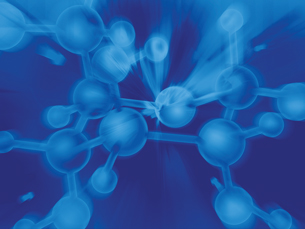Module 7 Intro
1. Module 7 Intro
1.4. Page 2
Module 7—The Digestive and Respiratory Systems
 Explore
Explore

© anna karwowska/shutterstock
A macromolecule, by definition, implies "a large molecule." In biology, this refers to carbohydrates, lipids, proteins, and nucleic acids. Known as the building block of all the structures within people’s bodies, these macromolecules are used to store energy, build structures, or store genetic material. Carbohydrates can be turned into fats and stored in bodies, while muscles and organs have large amounts of proteins. Lipids comprise membranes because of their insoluble nature. Nucleic acids are the building blocks of human genetic code.
 Read
Read
Read about the macromolecules: carbohydrates, lipids, proteins, and nucleic acids on pages 207 to 211 of the textbook.
Carbohydrates, lipids, and proteins can perform three functions:
- energy (carbohydates, lipids, proteins)—Examples are starch and glycogen.
- structure (carbohydrates, lipids)—Examples are cellulose and phospholipids.
- transport (proteins)
Organic Macromolecules

© alphaspirit/shutterstock
Organic molecules contain carbon and form the basis of most living things. It has been estimated that in nature there are millions more organic compounds than there are inorganic compounds. All four of the macromolecules that you have just read about—carbohydrates, lipids, proteins, and nucleic acids—are organic compounds. Each of these complex molecules is formed from simpler subunits in an anabolic reaction. The dehydration synthesis reaction described on page 207 of your textbook is a type of anabolic reaction.
 Watch and Listen
Watch and Listen
Watch the following animation that shows the processes of dehydration synthesis and the hydrolysis of sucrose and a protein. As you are watching, notice that for each bond formed (dehydration synthesis) another water molecule is produced. For each bond broken (hydrolysis), another water molecule is required.
anabolic: the metabolic process that builds larger molecules from smaller molecules
dehydration synthesis: an enzyme-controlled composition reaction in which compounds are formed by the removal of water
hydrolysis: the decomposition of a compound in a reaction by using water
catabolic: the metabolic process in which materials are broken down
Each macromolecule may be broken down again into its original repeating simpler subunits through catabolic reactions. In a catabolic reaction, molecules are broken down into smaller components, and energy is released. The breakdown of food in digestion is a catabolic reaction. The hydrolysis reaction described in your textbook on page 207 is an example of a type of catabolic reaction. Note that both of these reactions require enzymes to take place.